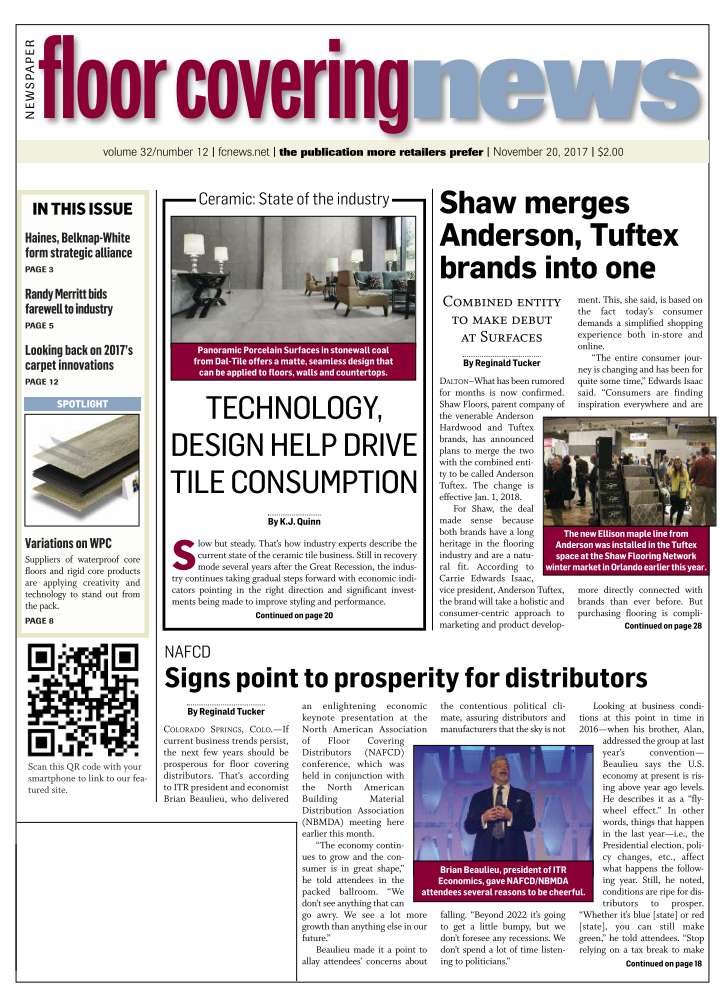November 20/27, 2017: Volume 32, Issue 12
By Elliot Gordon
Contractors are under pressure to complete projects on ever-shorter schedules with ever-tighter budgets. The imperative to get the job done quickly and efficiently may overshadow the need to fully test concrete slabs to determine whether moisture remediation is required. However, if moisture testing is not conducted and moisture content sneaks up on you in the middle of a project, it can be extremely disruptive to schedules and it can be costly.
So, how do you overcome the tricky balance of scheduling around unforeseen moisture in a flooring project? Consider the following four best practices:
Test early and test again. Excess moisture in concrete slabs is a common issue. One of the biggest mistakes flooring contractors make is to not plan for the possibility of moisture at the time of sale. Get a moisture test done well in advance of installing flooring by a certified professional. Anywhere from a year to a month beforehand is ideal for conducting initial moisture testing to start planning for the “what ifs.” This early testing will give you the big picture of what you are dealing with; if moisture levels are low, you know you will not need to allocate resources for moisture mitigation and you can free them up for other projects. For higher levels, continue monitoring moisture levels closer to installation time to make a final decision on the best moisture mitigation strategy. If you leave the first moisture testing to days before installation, and there is a moisture issue, you will have to delay the project to submit change orders and adjust schedules.
By testing early you can plan for what products are needed and schedule the right pros on the job at the right time. If you find there’s a moisture problem, you can order the right materials and submit a change order.
Select products to speed up timeline. The traditional approach to moisture mitigation is the use of a two-part epoxy to seal the slab surface, providing a dry substrate for the floor. While effective, this method requires multiple coats and a long cure time, potentially delaying the project schedule.
Newer technologies can help expedite the timeline when mitigation is required, freeing up labor for the next project. These innovations also help flooring contractors feel more comfortable maximizing their number of projects while still meeting customers’ timelines.
A proven moisture mitigation strategy is to apply a moisture barrier prior to installing the finished flooring. (Moisture barriers are sheet membranes designed to be laid down above the concrete slab but underneath floor coverings.) When working on a renovation, moisture barriers can also be placed over intact existing flooring to avoid demolishing the old flooring. The latest sheet membranes for floor protection are designed to offer significant advantages over liquid epoxy. Contractors and building owners can enjoy reduced installation time and easy application, saving time and labor.
Training. It is vital to spend the time and money to make sure your team is educated properly. Remember: A well-trained team works efficiently and avoids costly mistakes that can cause time-consuming delays.
Communication. Another important element to keep a project running smoothly and on time is daily or at least weekly communication between the general contractor and the flooring contractor, even before the flooring installation begins. Be sure to document all communication as well.
Elliot Gordon is product marketing manager, flooring, at GCP Applied Technologies, where he leads all product development and marketing initiatives for GCP’s flooring underlayment, tapes and tools product lines.

